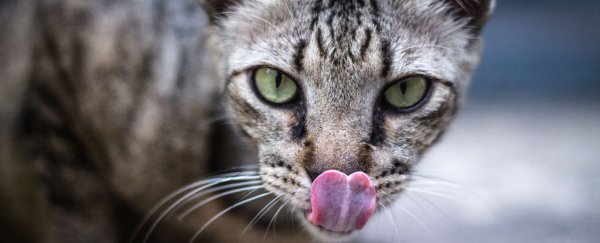It's no secret that Australia has a serious problem with feral cats – a recent report concluded that they're now spread across 99.8 percent of the country – but what's less clear is how authorities are actually dealing with the issue.
Thanks to Freedom of Information (FOI) laws, it's now been revealed that staff who manage national parks in the Australian state of Victoria have been using fried chicken – specifically KFC – to lure the feral animals.
The revelations come after an FOI request was made to access the credit card statements of Parks Victoria, a government agency which employs approximately 1,200 staff to look after the state's national parks and marine sanctuaries.
The documents showed that, amidst overall spending of AUD$2.2 million in 2015/16, $260 was spent by staff in seven visits to one KFC store over a four-month period.
While Parks Victoria is under fire for using taxpayer money to make several other transactions recorded on the statement – including Netflix, iTunes, and jewellery purchases – the agency maintains that the KFC billing is legit.
"KFC is widely known to be the most effective bait for luring feral cats," a senior Parks Victoria staff member, who wished to remain anonymous, told Melissa Davey at The Guardian.
According to the source, the KFC purchases were used in a baiting program to lure feral cats into traps on French Island, about 60 kilometres south-east of Melbourne.
But while the whole notion of purchasing fast food to trap wild animals might sound kind of unbelievable, scientists say it's not unheard-of.
"There hasn't been any data published on it so the information we have is anecdotal, but it does work for luring feral cats, though mainly in urban areas," biologist and feral cat expert Christopher Dickman from the University of Sydney told The Guardian.
"Cats in remote areas are more suspicious of new foods, but cats in urban areas are more used to living close to KFC outlets and are familiar with the smell. It is a popular bait with a strong aroma that is very attractive to carnivores."
And it's not like feral cats are exactly picky about what they eat. Research published in 2015 found that Australian feral cats consume some 400 species of birds, mammals, reptiles, and frogs.
While that might be pretty good chow as far as a feral cat is concerned, it can't hope to compete with the enhanced luring capability of the 11 herbs and spices in KFC.
"Fried chicken is included in the national guidelines for trapping feral cats and is used due to its scent and prolonged freshness," said animal communications expert Alan Robley from the Arthur Rylah Institute for Environmental Research.
And sure enough, an Australian predator management document we found dating back to 2011 does mention KFC for luring feral cats due to the fried chicken's extended odour – and even advises readers to visit KFC "to enquire whether it is possible to obtain discarded chicken pieces for cat trapping".
So it seems Parks Victoria may be off the hook in terms of the KFC expenditure, because – as crazy as it sounds – there's clearly a precedent for using this particular brand of fried chicken to lure these feral animals.
Now that that's settled, we just have to figure out what to do with Australia's booming feral cat population, estimated to be as high as 6 million animals, which threaten more than 100 of the country's native species.
Previous research has shown that the most obvious fix – culling – isn't always effective, as it can actually lead to numbers rebounding.
Here's hoping scientists can come up with a solution soon – even if it involves KFC.
